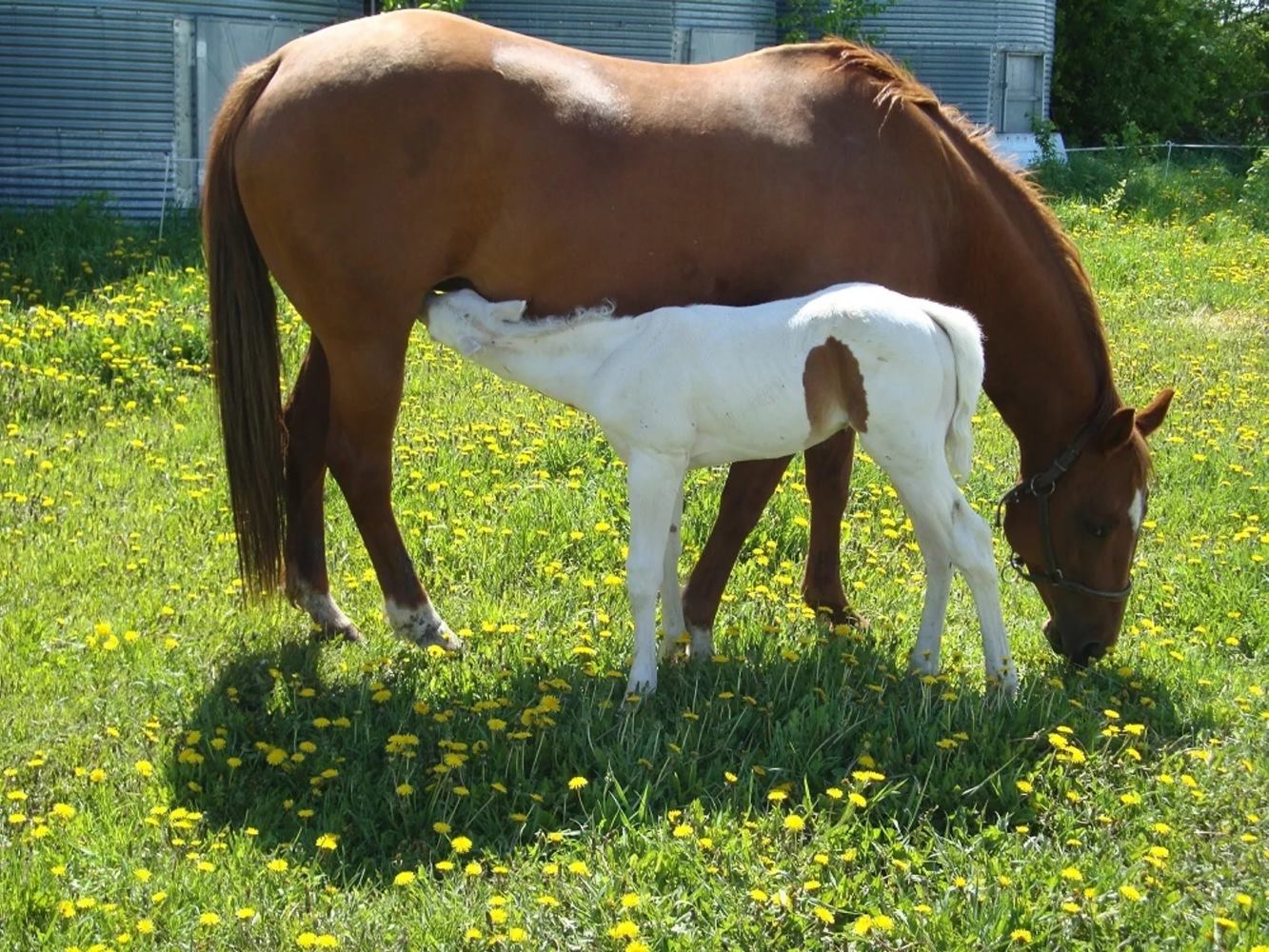
Lethal White Syndrome is a genetic condition affecting horses, particularly American Paint Horses. This disorder results from a mutation in the Endothelin receptor type B (EDNRB) gene. Horses with this syndrome are born with a predominantly white coat and blue eyes. Unfortunately, these foals often suffer from severe intestinal issues, leading to early death. Breeders must be cautious when mating horses, as two carriers of the gene have a 25% chance of producing an affected foal. Understanding the genetic risks and symptoms can help in making informed breeding decisions, ensuring healthier offspring and reducing the incidence of this heartbreaking condition.
What is Lethal White Syndrome?
Lethal White Syndrome (LWS) is a genetic disorder affecting certain horse breeds, particularly Paint Horses. It results from a mutation in the endothelin receptor type B (EDNRB) gene. Horses with LWS are often born with severe health issues, leading to early death.
- Lethal White Syndrome primarily affects Paint Horses, but it can also occur in other breeds carrying the overo gene.
- The disorder is caused by a mutation in the EDNRB gene, which plays a crucial role in the development of nerve cells in the intestines.
- Foals with LWS are usually born with a completely white coat, hence the name "Lethal White."
- These foals often suffer from intestinal aganglionosis, a condition where nerve cells are missing in parts of the intestines, leading to severe digestive problems.
- Most foals with LWS die within a few days of birth due to complications from their intestinal issues.
Genetic Inheritance of Lethal White Syndrome
Understanding how LWS is inherited can help breeders make informed decisions to reduce the risk of producing affected foals.
- LWS is an autosomal recessive disorder, meaning a foal must inherit two copies of the mutated gene (one from each parent) to be affected.
- Horses that carry only one copy of the mutated gene are called carriers and do not show symptoms of the disorder.
- When two carrier horses are bred, there is a 25% chance of producing a foal with LWS.
- There is a 50% chance that the foal will be a carrier, inheriting one copy of the mutated gene.
- There is a 25% chance that the foal will inherit two normal genes and be completely unaffected.
Symptoms and Diagnosis of Lethal White Syndrome
Recognizing the symptoms and diagnosing LWS early can help manage the condition, although the prognosis is generally poor.
- Foals with LWS are typically born with a pure white coat and blue eyes.
- They often exhibit symptoms of colic shortly after birth, such as restlessness, rolling, and kicking at the abdomen.
- A definitive diagnosis of LWS can be made through a genetic test that identifies the presence of the mutated EDNRB gene.
- Veterinarians may also use radiographs or ultrasound to detect abnormalities in the intestines.
- Unfortunately, there is no cure for LWS, and affected foals usually require euthanasia to prevent suffering.
Preventing Lethal White Syndrome
Breeders can take steps to reduce the risk of producing foals with LWS by understanding the genetic factors involved.
- Genetic testing of breeding stock can identify carriers of the mutated gene.
- By avoiding breeding two carrier horses, breeders can significantly reduce the risk of producing affected foals.
- Some breeders use planned matings to ensure that at least one parent is not a carrier of the mutated gene.
- Educating breeders and owners about LWS and its genetic basis can help prevent the spread of the disorder.
- Organizations like the American Paint Horse Association offer resources and support for breeders dealing with LWS.
Impact on the Horse Community
LWS has significant implications for the horse community, affecting breeding practices and the welfare of affected foals.
- The presence of LWS has led to increased awareness of genetic disorders in horses.
- Breeders are now more likely to use genetic testing as part of their breeding programs.
- The disorder has prompted discussions about ethical breeding practices and the importance of genetic diversity.
- Some horse registries have implemented mandatory testing for LWS in certain breeds.
- The horse community continues to advocate for research into genetic disorders to improve the health and welfare of horses.
Research and Future Directions
Ongoing research into LWS aims to improve our understanding of the disorder and develop better strategies for prevention and management.
- Scientists are studying the genetic mechanisms underlying LWS to identify potential targets for treatment.
- Research into gene therapy holds promise for correcting the genetic mutation responsible for LWS.
- Advances in genetic testing technology are making it easier and more affordable for breeders to test their horses.
- Collaboration between researchers, veterinarians, and breeders is essential for making progress in the fight against LWS.
- Continued education and awareness efforts are crucial for reducing the incidence of LWS and improving the lives of affected horses.
Final Thoughts on Lethal White Syndrome
Lethal White Syndrome, a genetic disorder, affects horses, particularly those with overo patterns. This condition results from a mutation in the EDNRB gene. Foals born with this syndrome often suffer from severe intestinal issues, leading to early death. Breeders must be aware of the risks and test their horses to prevent passing on the gene. Understanding the symptoms, such as colic and lack of bowel movements, can help in early detection. While there’s no cure, supportive care can provide temporary relief. Responsible breeding practices and genetic testing are crucial in reducing the occurrence of Lethal White Syndrome. By staying informed and vigilant, breeders can make better decisions, ensuring healthier future generations of horses. This knowledge not only helps in managing the condition but also in promoting overall equine welfare.
Was this page helpful?
Our commitment to delivering trustworthy and engaging content is at the heart of what we do. Each fact on our site is contributed by real users like you, bringing a wealth of diverse insights and information. To ensure the highest standards of accuracy and reliability, our dedicated editors meticulously review each submission. This process guarantees that the facts we share are not only fascinating but also credible. Trust in our commitment to quality and authenticity as you explore and learn with us.


